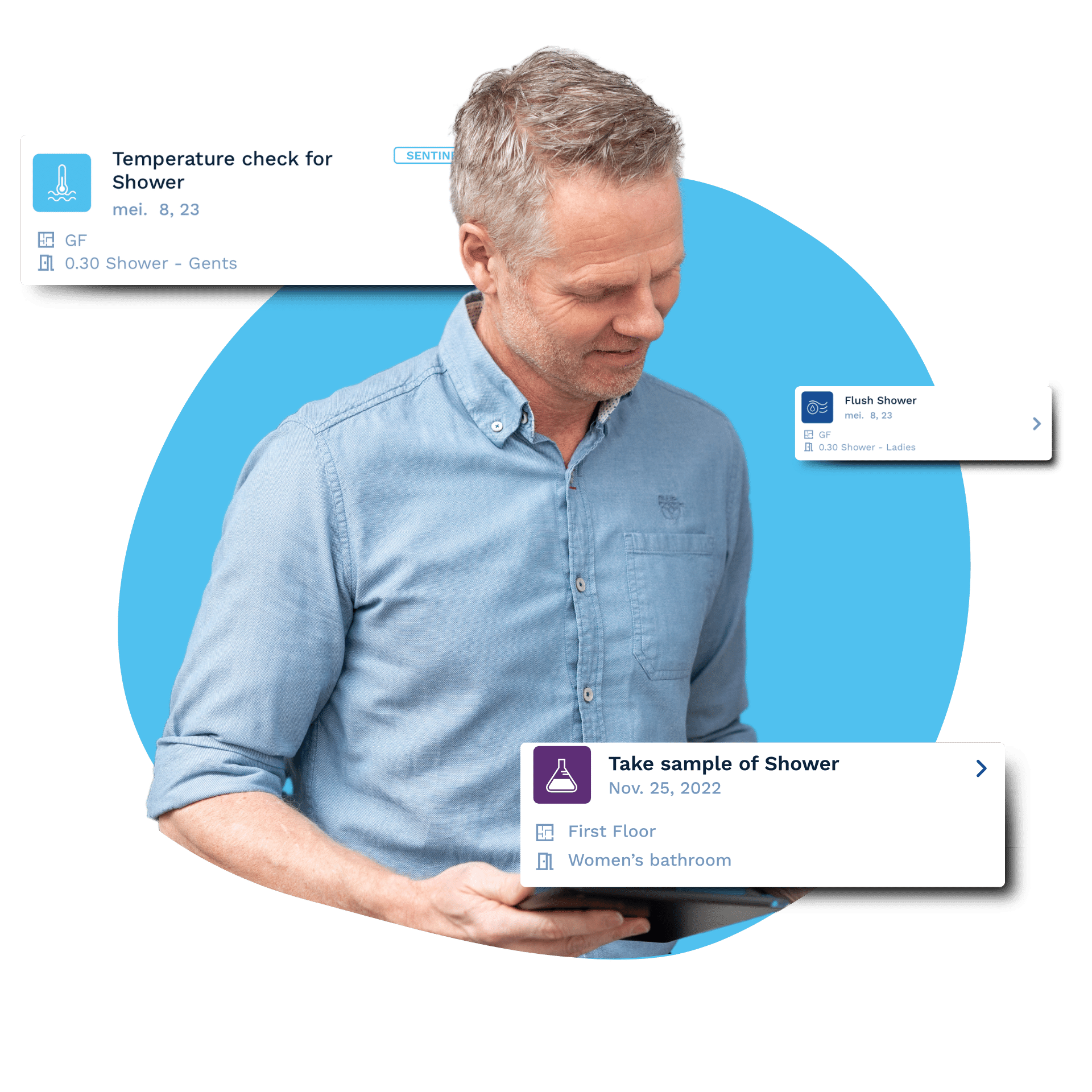"The first app to work properly to our full satisfaction!"
- Simon Larkens

2,1K
Assets to Manage
4 🕓
Hours Extra per Week
100%
Virtually Safe
🧑🏽🔬
'Eureka' Moment
THE PROBLEM
In 2012, the University of Groningen experienced a serious Legionella outbreak within its Faculty of Medical Sciences (UMCG).
With over 2,100 water outlets, the university faced a significant challenge in maintaining water safety, especially in such a sensitive environment as medical facilities.
The existing manual system of temperature checks and data entry was not only time-consuming but also prone to human error, increasing the risk of non-compliance and endangering the health of students, staff, and patients.
The technical team was under pressure to ensure that all water outlets were routinely checked, but the sheer volume of outlets and the outdated manual methods made it difficult to stay on top of the monitoring process.
Hans Bouwman, responsible for water safety management at the university, found that manual record-keeping and tracking were both inefficient and overwhelming, particularly in such a complex environment.
The university needed a reliable, streamlined solution to ensure compliance with water safety regulations and avoid another Legionella outbreak.
“With just a small team and 2,100 outlets to manage, LegionellaDossier’s efficiency and ease of use have made all the difference in keeping our water systems safe.” - Hans Bouwman
THE SOLUTION
In 2015, the University of Groningen partnered with LegionellaDossier to digitise and automate their water safety management. The implementation of LegionellaDossier’s app-based system, coupled with Bluetooth-enabled thermometers, helped the way the university approached water safety.
Instead of relying on manual temperature checks and data entry, Hans and his team could now take accurate temperature readings across all 2,100 water outlets and have the data uploaded instantly to a secure, cloud-based platform.
The proactive nature of the LegionellaDossier solution allowed the University of Groningen to catch potential issues before they developed into more serious problems, flagging discrepancies immediately, so the university could respond to risks faster and with greater precision.
The system allowed for real-time monitoring, automatically flagging any outlets that fell outside safe temperature ranges and scheduling follow-up checks.
Additionally, it provided automatic reminders to ensure that any missed checks or maintenance tasks were promptly addressed.
The ability to use the system offline meant that the team could work in areas with limited connectivity, ensuring seamless operation even in the most complex parts of the building.
The system also provided pre-set checklists for specific departments like the dentistry faculty, ensuring that specialized areas of the university remained fully compliant with water safety standards.
Hans noted that the LegionellaDossier system saved him at least half a day each week, a substantial amount of time that was previously spent on manual data entry and logging.
This extra time allowed him to focus on other critical maintenance tasks and preventative measures.

LOOKING INTO THE FUTURE
The University of Groningen plans to continue leveraging LegionellaDossier’s system to further improve water safety. They are exploring features such as predictive analytics and remote monitoring sensors to detect potential risks before they arise, helping them take an even more forward-thinking approach.
The university also aims to expand the use of digital tools across other maintenance operations, building on the success of the LegionellaDossier system.
By implementing LegionellaDossier, the University of Groningen has positioned itself as a leader in water safety management within large academic and medical institutions.
The system’s scalability ensures that they can continue to meet growing demands without sacrificing compliance or safety.
This case study emphasises how the University of Groningen successfully transitioned from a manual, error-prone system to a streamlined, automated process, significantly improving compliance, efficiency, and proactive risk management.
“The real-time alerts and automated reminders give us peace of mind. We never have to worry about missing a check or following up too late.” - Hans Bouwman

Get Full Control On Water Safety Activities

